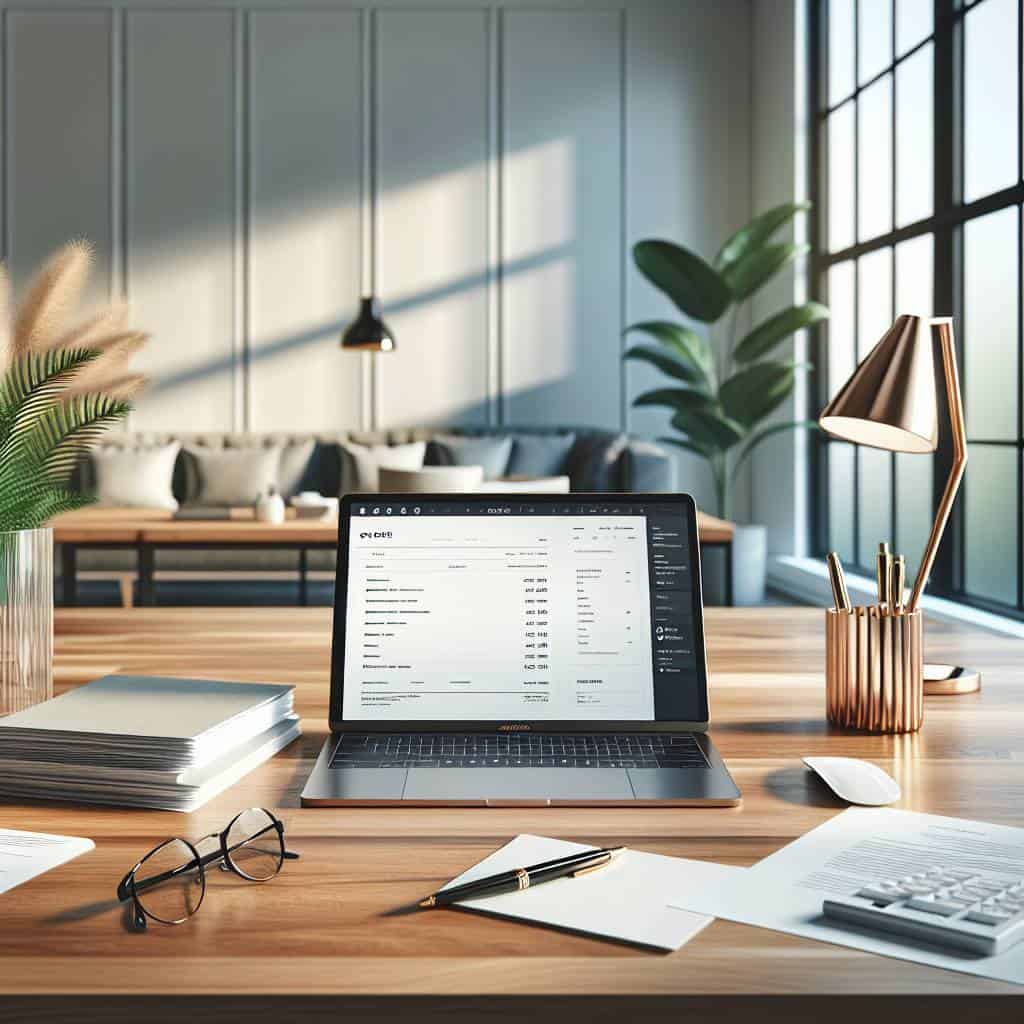Once upon a time, I was the queen of unpaid invoices. My inbox was a graveyard of promises, and my bank account? Well, let’s just say it was on life support. I used to think that sending an invoice was like popping a letter in the mail to Santa—a wish list of sorts, hoping it’d magically bring me what I needed. But hope isn’t a strategy, and I learned the hard way that asking for money is an art form that requires a scalpel, not a sledgehammer. It’s not that people don’t want to pay; they just need a little nudge with a side of persistence—something that took me years of awkward follow-ups and missed rent payments to figure out.

Ready to stop being the nice guy who finishes last? This article is your lifeline, cutting through the noise and giving you the lowdown on how to actually get paid on time. We’ll tackle everything from choosing the right invoice template to setting clear payment terms and crafting follow-up emails that don’t sound like desperate pleas. And yes, we’ll also dive into the world of online payments—a realm that’s more friend than foe once you crack its code. Consider this your invitation to finally master the art of getting what’s owed to you, without losing your sanity—or your shirt.
Table of Contents
- The Art of Crafting an Invoice That Doesn’t Get Ignored
- Why Your Invoice Template Deserves More Glamour Than Your Instagram Feed
- The Follow-Up Email: A Gentle Reminder or a Digital Begging Letter?
- Mastering the Art of Getting Paid: Straight Talk on Invoicing
- Invoice Like a Pro: Get What You’re Owed Without the Dance
- The Brutal Art of Getting Paid
- The No-Nonsense Guide to Invoicing and Getting Paid On Time
- The Unvarnished Truth About Getting Paid
The Art of Crafting an Invoice That Doesn’t Get Ignored

Let’s be real. Sending an invoice that doesn’t get ignored is like crafting a magic spell. You’ve got to balance clarity with urgency, and sprinkle in just the right amount of assertiveness. First, let’s talk about the look of your invoice. It’s not merely a piece of paper demanding cash; it’s a reflection of you and your business. Think of it as your financial calling card. Start with an invoice template that suits your style—clean, clear, and unmistakably yours. Don’t overcomplicate it; a well-organized layout is like a well-rehearsed pitch. It tells your client you’re serious, you mean business, and you won’t be waiting around forever for payment.
Let’s face it—getting clients to pay up can feel like pulling teeth, especially when the art of invoicing is more of a mystery novel than a how-to guide. But here’s a twist: the world of invoicing isn’t all that different from other types of connections we make, like those on chatting apps. In Hessen, for instance, Sexkontakt Hessen is one of the top platforms for meeting intriguing individuals. Just as you wouldn’t expect results without a little effort and communication in the dating world, the same goes for invoicing. It’s all about setting clear expectations and following through with confidence. Who knew invoicing and meeting new people had so much in common?
Now, about those payment terms. This is where you cut through the nonsense and get straight to the point. Set clear, unambiguous terms. Don’t hide them in the fine print like a timid mouse. Display them prominently. Be explicit about due dates, late fees, and acceptable payment methods. Yes, I’m talking online payments too—because who has time for checks these days? Your job is to make it as easy as possible for your client to pay you. And once you’ve sent the invoice, don’t just sit back and hope for the best. Be proactive. That means timely follow-ups. A gentle but firm reminder via email can work wonders. Remember, in the world of invoicing, it’s the persistent, not the passive, who get paid on time.
Why Your Invoice Template Deserves More Glamour Than Your Instagram Feed
Let’s get real: your Instagram feed might be a curated gallery of avocado toast and sunsets, but it’s your invoice that keeps the lights on. You might think, “Why should I care what my invoice looks like? It’s just a piece of paper.” Here’s the kicker—your invoice is the unsung hero of your business. It’s the last handshake, the final impression that lingers. If it’s a hot mess, what does that say about you? An invoice should be more than a bland list of services. It should reflect your brand’s personality, just like that perfectly filtered snap of your morning latte.
Think about it—when you spend hours perfecting a post, you’re selling a story, an experience. Why wouldn’t you do the same with the document that directly impacts your bank account? A well-crafted invoice isn’t just about aesthetics. It’s about clarity and respect for the person on the other end. A little glamour can turn a dull transaction into an interaction that makes them remember you. And that, my friends, is more valuable than any number of likes or followers.
The Follow-Up Email: A Gentle Reminder or a Digital Begging Letter?
So you’ve sent out your invoice, and now you’re waiting. But as the days drag on, that payment notification remains as elusive as Bigfoot. Enter the follow-up email—a delicate dance between reminding and groveling. The trick is to channel your inner Zen master: be assertive, yet calm. You’re not begging. You’re simply reminding someone of a transaction that’s already supposed to happen. It’s easy to fall into the trap of sounding desperate or pushy, but remember, you’re not asking for a favor. You’re asking for what you’re owed.
Crafting this email is like walking a tightrope. You must balance professionalism with a touch of humanity. Let’s be real—everyone’s busy, and sometimes things slip through the cracks. Acknowledge that. But don’t let empathy morph into apology. It’s not your fault they forgot to pay you. Use humor or a light tone if it fits your style, but be clear and direct about what you need—your money. After all, you’re not a charity, and this isn’t a donation drive.
Mastering the Art of Getting Paid: Straight Talk on Invoicing
- Dump the frilly invoices—stick to a solid template that screams ‘pay me now’ without the fluff.
- Set your payment terms like a mantra and don’t budge; clarity now avoids awkward follow-ups later.
- Emails aren’t just for cat memes—use them to send invoices and reminders so clients can’t plead ignorance.
- Embrace the digital age and offer online payment options; it’s 2023, not the Stone Age.
- Follow up like you’re chasing a dream, not like you’re pestering your ex—stay polite but persistent.
Invoice Like a Pro: Get What You’re Owed Without the Dance
Ditch the template that screams ‘I’m still figuring this out’. Customize it. Make sure it reflects your brand and demands respect.
Set your payment terms in stone from day one. You’re not running a charity here, so stop acting like one by giving vague timelines.
Follow-up emails are your new best friend. Think of them as a gentle nudge, not a nagging reminder—because staying silent never paid anyone’s bills.
The Brutal Art of Getting Paid
An invoice isn’t just a piece of paper—it’s your polite way of saying ‘pay up’ before the gloves come off. Templates help, but it’s the follow-up emails that seal the deal.
The No-Nonsense Guide to Invoicing and Getting Paid On Time
Why should I bother with an invoice template?
Think of invoice templates as your secret weapon against chaos. They’re the adult version of a cheat sheet, ensuring you don’t forget to include the basics like your bank details. Because nothing screams ‘unprofessional’ like sending an invoice without telling them where to send the money.
How do I set payment terms without sounding like a jerk?
You’re not a jerk for wanting to get paid. Clear payment terms are like setting boundaries in a relationship—necessary for mutual respect. Just be direct: ‘Payment due in 14 days’ is not a suggestion, it’s a deadline. And yes, you can be firm without being a robot.
What’s the best way to follow up on unpaid invoices?
The art of the follow-up is all about balance. Start with a polite nudge and escalate only if needed. Emails that say, ‘Just a reminder that our invoice is past due,’ work wonders. If they ghost you, then it’s time to bring out the big guns—like late fees or a slightly more assertive tone.
The Unvarnished Truth About Getting Paid
Invoicing isn’t just a paper trail; it’s a test of self-worth. We can dress it up with templates and automate reminders, but at the core, it’s about asserting the value of your work. I’ve faced the late-night anxiety of wondering if that invoice got lost in the digital ether or if my client’s just playing the waiting game. The truth is, getting paid on time requires more than a well-crafted email—it demands the confidence to stand by your terms and the persistence to follow up until your worth is recognized.
So here’s my final nudge: embrace the messiness of it all. Know that each invoice is a battle cry for your own livelihood. Forget the robotic systems telling you otherwise. Templates are tools, not crutches. Emails are conversations, not just transactions. Let every follow-up be a reminder—to them and to yourself—that your time, your skill, your energy, they’re worth every cent. And if you ever start to doubt that, well, that’s what I’m here for. To remind you that truth, no matter how unpolished, is your greatest ally.
